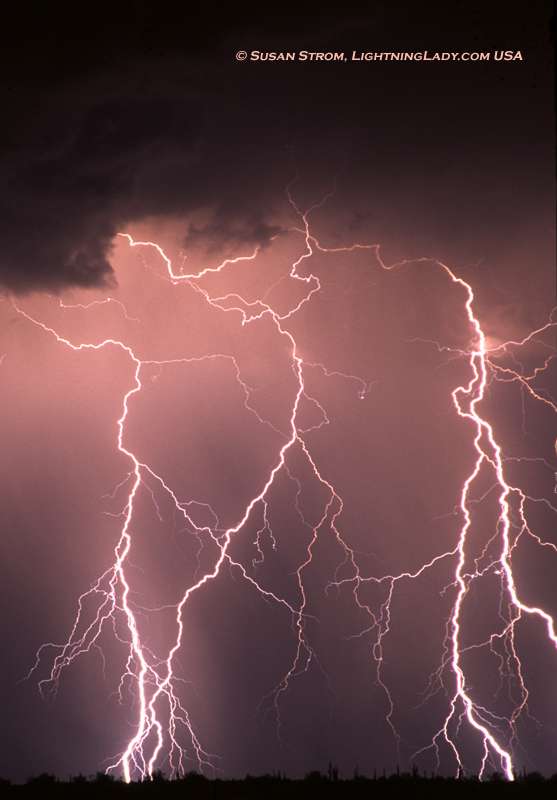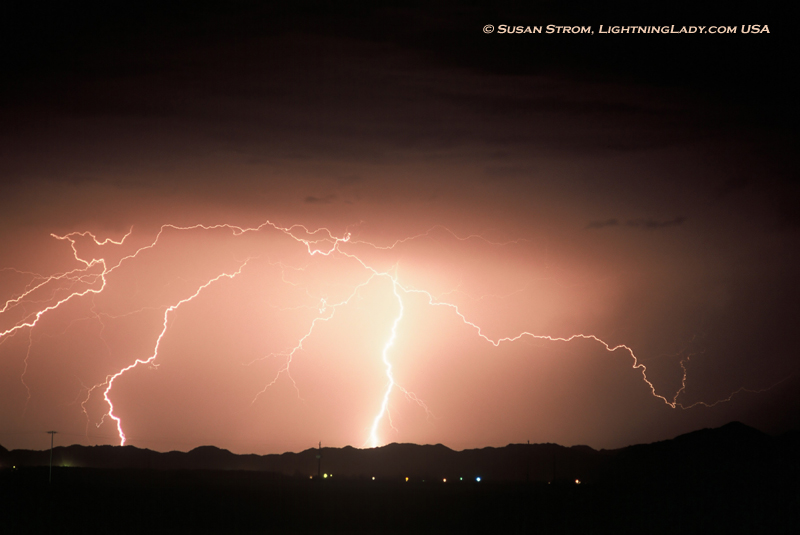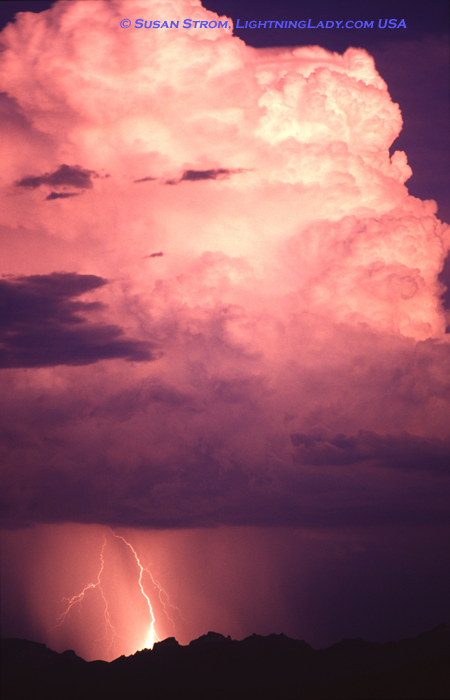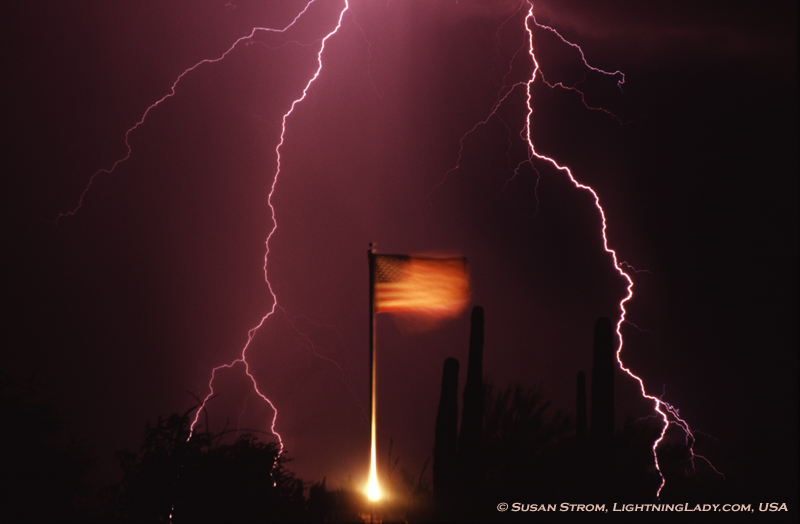Mike Hollingshead
I found a decent spot around here to shoot some local lightning storms. No idea why I never tried this before. I'd post it in reports but it's really not a chase. Does anyone have an idea what causes some bolts to be quite red? It doesn't appear to have anything to do with the ISO used. I assume it is a just where they are located in regards to precip or haze. I guess it is possible it's just a white balance thing with some. I can say for certain though some of the bolts this night were visibly very red, especially one I saw very early on way off in the distance.

Some other's weren't nearly as red....

There are several more examples here: http://www.extremeinstability.com/06-7-25.htm
If you have any cool red bolts please post them.
Mike

Some other's weren't nearly as red....

There are several more examples here: http://www.extremeinstability.com/06-7-25.htm
If you have any cool red bolts please post them.
Mike






